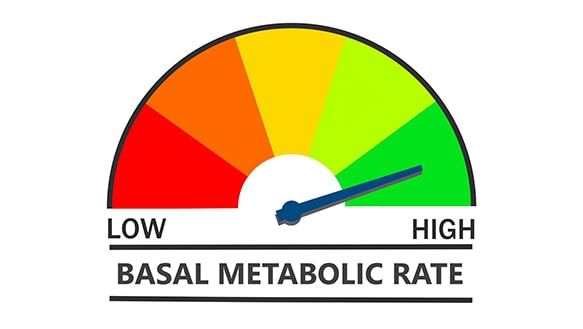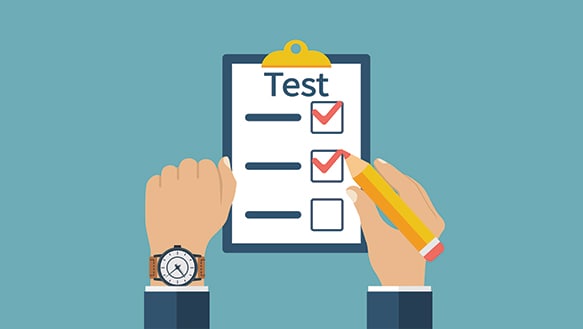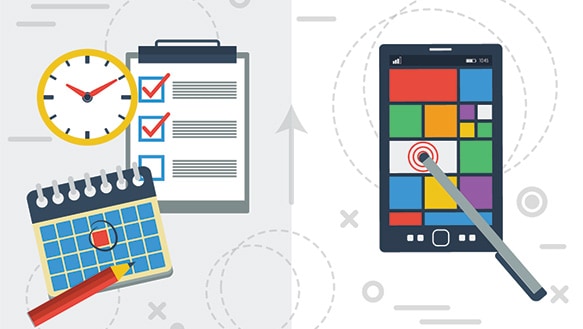This article is all about basal rates.
You will learn what they are, what they mean, why it’s important to test your basal rates, how they should be adjusted to account for exercise, sleep, or to get to target. We will learn how the basal rate differs from the bolus rate.
You will find everything that you need to know about basal rates in this article.
Contents
- Seek advice from your Care Team
- Casey’s story
- What is a basal rate?
- Normal basal rates for people with diabetes
- Why is it important to test your basal rate?
- Times to test your basal rate
- Testing your basal rate
- Frequently Asked Questions
- What is the calculation for basal rate?
- Tips for setting basal rates on insulin pumps:
- What is a bolus rate?
- Over to you
Seek advice from your Care Team

In order to learn your way around your pump and to set your basal rates, you will first need hands-on instructions from your Care Team. They will demonstrate how you can perform your basal rate calculations.
They will show you how to set your basal rate into the settings on your pump. After you demonstrate the steps to your Care Team, they will know whether you are ready to adjust your own pump settings.
Fly solo with insulin pump settings only when you are ready
Then and only then, should you adjust your basal settings on your insulin pump without supervision from your Care Team. While pumps are different, calculations are the same. You need to demonstrate that you can do the math, and work the pump. This is not something you will learn to do just by reading.
Your pump representative is of valuable resource. Often they are nurses, or Certified Diabetes Educators (CDE), who specialize in insulin pump knowledge.
For the new pumper
For those of you, who are just starting insulin pump therapy, always seek the advice of your Care Team when changing any of your pump settings. It is not a good idea to be careless with the insulin dose. It could lead to a dangerously low blood sugar or a dangerously high blood sugar, which can put you into ketoacidosis.
Casey’s story
Casey came to me because she wanted to learn how to set the basal rates herself for her insulin pump. Since I worked in a public health department that mainly saw people with Type 2 Diabetes, I called in my friend who had more insulin pump experience for assistance.
Diana came to meet with Casey. She had pump certification for Casey’s new insulin pump, the T-Slim. Casey had brought the log book of her basal rate testing with her. With this, Diana was able to program her basal rate into her pump within minutes.
Casey had Zumba classes at the gym on Mondays, Wednesdays, and Fridays at 5:30 pm. She had her basal rate of insulin adjusted to start to get into her system at around 3:30 pm on those days. By 5 pm, she would be getting a little less basal insulin while she exercised.
Casey was a great pump candidate. She was pro-active. She planned ahead. She read up the directions for basal rate testing, and she showed up at her appointment with all the data in her hands. She then learned to work her insulin pump settings like a pro. She no longer needed her Care Team to set her insulin pump basal rates or bolus rates. She could adjust them herself.
What is a basal rate?
When we speak of basal rates of insulin for diabetes, we are referring to insulin that is meant to keep the blood glucose steady for a 24-hour period. For patients with no insulin pump who take injections, basal rate still applies to them.
If you take injections, you may be taking a basal insulin once a day, or a split dose of NPH that serves as your basal dose that is meant to do essentially the same thing. Basal rate on an insulin pump is sometimes called background or baseline insulin.
I also recommend advise reading the following material:
What is the basal rate for an insulin pump?
When we talk about the basal rate of an insulin pump, we are referring to about 50% of the total daily dose of insulin that a person with diabetes requires, give or take 10%. Instead of taking a basal insulin injection, the pump delivers short-acting insulin as the basal insulin dose throughout the day and night. How much a person eats, and how much activity they are getting, plays into the basal dose calculation.
In an insulin pump, you use short or rapid-acting insulin. You could use Humalog (lispro), Novolog (aspart), or Glulisine (Apidra). There are several pumps that do use regular insulin for the pump, which is used to set bolus and basal rates.
What is basal rate when taking insulin injections?
In a person using injections of insulin, the basal dose is the long acting insulin (ex: Lantus, Levemir, Toujeo), or intermediate acting insulin given in 2 doses (such as NPH insulin such as Humulin N). (1)
What does my basal rate represent for my insulin pump?
Your personal basal rate represents half of your daily insulin needs. The half of your daily dose is meant to keep your blood sugars steady over time, while the other half is meant to cover meals, or for a correction dose (for a high fat, high carbohydrate snack).
During activities, the basal rate on your insulin pump may need to be lowered as you expend more energy. If your blood sugar is too high or too low on a day to day basis, your provider may look at adjusting the basal insulin dose in your insulin pump settings.
Normal basal rates for people with diabetes
There is no “normal” basal rate for people with diabetes on an insulin pump. Each basal rate is individually calculated based on that person’s needs by the healthcare provider.
Often, the Certified Diabetes Educator, who is pump certified, figures out the basal and bolus rates for the pump. Some people with diabetes require more insulin than others to keep their blood sugars and A1C in a target range. In this case, they will require a higher basal rate than someone who doesn’t require as much insulin. Smaller people with not as much muscle mass may need less insulin for their basal rate.
The provider who sets the basal and bolus rates on the pump will use a calculation to determine the basal rate (See the calculation of basal rate near the end).
Rates for pregnant women
From early until late pregnancy, carbohydrate to insulin ratio decreases at each meal due to the high demand of the fetus on board. Basal insulin, however, doesn’t decrease as much. (2)
Why is it important to test your basal rate?
The basal rate represents the very core of our diabetes management. If we don’t have our basal insulin rate correct, then our boluses will be off. Though basal rate testing can really help to ensure that you have your basal rate correct, most people with diabetes on an insulin pump will tell you that it’s no piece of cake, and not something that they look forward to doing.
First, basal rates are ONLY set on insulin pumps, but basal rate testing can be performed whether you are on an insulin pump or taking daily injections that include basal insulin. With injections, you won’t have as much leeway to make adjustments.
The trick is to eliminate any variables that may be causing changes in your blood glucose, so that you can be sure that it is your basal insulin changing your blood sugar levels. In other words, you don’t want it to be food, or activity, or sleep that is changing your blood sugar levels, so you will want to eliminate those variables.
Some people with diabetes prefer to test their basal rate overnight. Basal rate testing involves fasting, so you might want to shoot for certain times of the day to avoid fasting for too long.
Times to test your basal rate
You will do one test per day. Some popular times when basal tests are done are:
- At night between 10 pm and 6 am
- In the morning between 6 am and 12 noon
- In the afternoon between 12 noon and 6 pm
- In the evening between 6 pm and 12 am
The idea is to cover the whole 24 hours. You will test within each time period, on different days, and for several tests, prior to making any changes to your basal rates. This is so that you can make sure that changes in your blood sugar are due to your basal insulin dose.
Once you have tested several times, you will make your adjustments, and then you will check again to make sure that you got it right.
Testing your basal rate
- Prepping for basal rate testing
You will need to do make some preparations before testing your basal rate. Preparing will ensure that your testing will be more accurate.
- Fasting before basal testing
When you start the test, make sure that your last meal was at least four hours ago, but not more than 12 hours ago. The liver kicks in extra glycogen when it thinks that you are starving, so you don’t want your liver acting up during testing.
- Eating a light meal before basal testing
For the meal that is at least four hours before the testing, make it a light meal that is low in fat and protein. This will keep a heavy meal from affecting blood glucose hours later.
- Keep blood sugars in a target range before basal testing
When you start the test, your blood sugar should be somewhere between 80 mg/dl and 180 mg/dl. You should not have bolused (or given yourself extra insulin through the pump) any insulin for the last four hours.
- Avoid low blood sugar during basal testing
For six hours prior to your test, there should have been no low blood sugar excursions. It should have been at least 12 hours since you last exercised, and 12 hours since you had any alcoholic beverages.
- Avoid illness and stress during basal testing
If you have been under stress, or you have had an illness, then wait to test when you are feeling better. Do the test when your infusion set is on the second day of use, not on the first or the last day.
- Avoid doing anything that may affect your blood sugar during basal testing
When you are prepped to do the actual test, try not to do anything that would affect your blood sugar. Do your best not to do anything that might affect your blood sugar.
- Keep a log of your data while basal testing
Start collecting your own data. Write everything down. Check your blood sugar one time per hour, and write it all down.
You should record the date/time, and the result of the test each hour. You can use your cell phone alarm to go off and remind you, or an alarm clock.
- Stop to correct low or high blood sugar during basal testing
Remember you are fasting, so don’t eat anything (unless you have a low blood sugar). If you have low blood sugar symptoms, you may have to stop the test to treat it.
It’s more important to fix a low blood sugar than to test your basal rate, and you should always tend to that first. You can reschedule your basal testing if needed.
- After basal testing, eat a regular meal or snack
After you are done testing, you can eat a regular meal or snack. Similarly, if you have a high blood sugar, you should stop testing and treat that also. You should not perform any physical activity during the test.
When you finish the test, get something to eat. Then take the time to take a look at your own data. What you are looking for is a movement in blood glucose.
- Check your log for movement in your blood sugar while basal testing
If there is a movement of 30-40 mg/dl in your blood sugar, or more, the basal rate will need adjustment. At this point, it’s a good time to recheck your blood sugar, and write it down again.
Frequently Asked Questions
What does your blood sugar do on other days at the same time?
Ask yourself the question, “Do I see this same sort of movement in my blood sugar on other days around the same time?” If the answer is “yes,” then you know that you will need to have your basal rate adjusted.
Can I test my basal rate at home?
You can indeed perform all of the basal rate testing from the comfort of your home, with your own blood glucose monitor. There is no need to go in to the provider’s office for basal rate testing. (3)
What if I use a Continuous Glucose Monitor (CGM)? Do I have to test my basal rate?
If you use a Continuous Glucose Monitor (CGM), then you should still do your basal rate testing. You may not need to do it as often as you would have if you didn’t have CGM. This is because a CGM doesn’t measure blood sugar. It measures interstitial fluid. Blood sugar and interstitial fluid are different, which is why you need to check your basal rate.
If you think that your CGM is giving you accurate results, just do a few blood sugar checks to make sure. If you know it is accurate, then you can use it for your basal rate testing if you feel comfortable.
How do you change the basal rate on an insulin pump?
Now that you have done your basal rate testing, it’s time for your Care Team to fiddle with your basal rate settings. When you are first learning about basal rates and testing, you should take the test in to your care team, and have them evaluate any changes that may be needed.
How do I determine my basal dose of insulin?
You don’t have to figure it out. You have your endocrinologist, CDE, and pump representative to help you with that. Later on, as you have learned your pump better, you can set it yourself. If you’re a beginner, there is help available.
The team will have an easy time to know how to adjust your basal rate, and they can show you how to do it based on what insulin pump you have. There is no way to tell you exactly how you will set it. There are many different insulin pumps, and that will be the job of the Care Team to show you how.
Think like the liver when testing basal rates
What we are trying to do with your basal rate of insulin is to mimic the functions of a liver. The liver gives you just enough glucose to keep blood sugars steady during sleep, in between meals, and during activity.
As the largest organ in your body, the liver has many functions, and one is to help keep your blood sugars steady over time. If you have done your basal testing correctly and eliminated variables, the only thing that should be increasing your blood sugar is your liver, and the only thing that should be decreasing it is your basal insulin rate. Anything that could change your blood sugar, such as what you eat, your bolus of insulin, exercise, stress in your life, and hormonal changes should all be eliminated.
Even though basal rate testing is cumbersome, it will provide you with the information to have a solid basal rate. It will be easier to pick up on problems with your bolus rate or meal correction injections if you have got your basal rate figured out correctly.
What about basal profile settings?
Most likely, your care team will want to keep your basal profile settings pretty simple. I would advise that you do the same once you are setting the basal rate on your own. Basal profiles can get complicated, but there is no need for them to be.
They can set your new basal rate, and over time, you can learn to make changes yourself. Once you have learned all there is to know about your particular insulin pump, you will be able to make changes in your basal rate settings on your insulin pump.
At what rate do I make changes in my basal rate?
Generally, you want to make changes very slowly, with no more than a 10% change at a time. If you make a small change, it’s safer to wait to see the results before making any changes again. If you changed it to 40% higher, and then realized you made a mistake in testing, that could result in low blood sugars.
Most pumps allow you to program different basal rates every hour, or even more often if needed. You can fine tune your blood sugar control with an insulin pump better than you can with injections.
When the basal rate is set on the pump, you have to set it to start 60-90 minutes before you want the change to occur. If you want it to change at 6 pm, set it for 4:40 pm or 5:00 pm.
How do you change the basal rate if you take insulin injections?
All of the work that you did when you were testing can still be taken to your Care Team if you use injections instead of an insulin pump. That’s all the information that they need to change your basal dose of insulin.
For more information on how to get your basal rates just right with injections, try Think Like a Pancreas, Chapter 6, where the author, Gary Scheiner, MS, CDE, explains this in detail.
So what are we trying to do with basal rates?
Basal insulin should generally be 40-60% of total daily dose of insulin. If you are on a very low carbohydrate diet, then your basal rate may be a higher percentage (closer to 60%) of your total daily insulin. If you are on a higher carbohydrate diet, then it will be closer to around 40% of your daily dose.
How should I change my basal rate?
Once your Care Team has taught you how to change the basal rate settings on your individual insulin pump, and if you feel comfortable, you can begin doing it yourself. That said, use your new basal rate testing skills! You can’t adjust your basal rate without the information that you need from your basal rate testing.
Does my basal rate change?
Your basal rate can and does change based on different things that you do. In the case study, Casey learnt to adjust it for exercise. Let’s talk next about how those adjustments will be made.
How can my basal rate be increased or decreased to get to my target?
If your blood sugars are too high, and not within your target range, your basal rate should be raised. This means that you will be getting more insulin through your insulin pump than before your basal rate was raised. If your blood sugars are trending too low, then you have too much basal insulin. At this point, your insulin’s basal rate will be decreased, which means that you are getting less basal insulin than before you changed your insulin pump settings.
How are my basal rates changed to account for exercise?
During exercise, your basal rate can be adjusted for the increased utilization of insulin, and energy expenditure. Your basal rate will need to be lowered for exercise. You are burning up more calories, using up more energy, and therefore you do not need more, but rather less basal insulin.
What other situations need a basal rate adjustment?
As you want to keep your basal rate patterns simple in your setting, you may program in several settings. Just don’t get carried away with it, and set too many different bolus rates. Studies demonstrate that basal rate profiles with increased variability resulted in episodes of hypoglycemia in adults with Type 1 Diabetes. Try to program anywhere from 1 to 6 different basal rates.
There may be a need for a lower basal rate in the early morning hours, from about 12 am to about 3 am, to account for the dawn phenomenon. During the dawn phenomenon, the liver kicks in extra glucose in the early morning hours when it thinks you are starving. This is a protective mechanism which serves one well when there is no diabetes present. With diabetes, this tends to cause high blood sugars.
For these early morning hours, you may have a different bolus rate setting to account for the high blood sugars. Your healthcare team can help you set it if you are not yet comfortable doing your own calculations and changing the pump settings.
Is basal rate the same for males as females?
Basal rates are based on insulin needs. Men often have higher insulin needs for women, but each basal rate will be based on a specific calculation.
What is the calculation for basal rate?
To calculate your basal rate, there are a few things you need to know. First of all, you may require up to 25 – 30% less insulin when you are placed on an insulin pump as opposed to injections.
- Total daily dose of insulin
Your basal rate will be calculated using the number of units of short acting insulin that you inject yourself with in a day, and the number of units of long acting insulin you inject in a day. These two numbers added together will give you your total daily dose of insulin.
Let’s say you take 22 units short acting before meals, spread out throughout the day, and you take 26 units of long acting insulin at bedtime. Your total daily dose is then 22 + 26 = 48 units total daily dose of insulin.
- Your insulin pump dose
You can go ahead and subtract 30% from that total, since you will use less insulin with the more efficient insulin pump:
48 x .03 = 1.44, or 14.4 is 30% of 48
- Calculate total daily pump dose
Now subtract 14 from 48:
48 – 14 = 34
34 is then your total daily pump dose.
- Calculate total basal rate in 24 hours
Divide your total daily pump dose by 2:
34 divided by 2 = 17
This is your total basal rate in 24 hours
- Calculate hourly basal rate
Divide the total basal rate in 24 hours (17) by 24 hours in a day.
17 divided by 24 = 0.7. This is your basal rate
You are now ready to set the basal rate on your insulin pump, with help if needed! It’s simple math that you must do to calculate your basal rate. You may want to keep the calculation around where it’s handy, in case you were to forget the steps to calculate your basal rate.
Further reading:
Tips for setting basal rates on insulin pumps:
- Set the basal rate to kick in 1 hour prior to when you want it to for children
- Set the basal rate to kick in 2 hours prior to when you want it to for adults
- Adjust in appropriate increments
- (Small increments don’t help with large doses of insulin, large increments don’t work with small doses of insulin)
- Adjust basal rates for whole number settings on the hour (remember, simplicity!)
- Each basal burst of insulin takes 60 to 90 minutes to hit its peak, and three to four hours to go out of your system
- Consult your healthcare team anytime you need assistance with basal rates or pump settings
What happens with basal rates as we age?
Basal rate requirements for those below the age of 12 should be lower. Because growth hormones and cortisol, basal rates rise at night for those adolescents due to excess glucose produced by the liver, can make their basal rates higher. As we get older it switches to dawn phenomenon, which still results in the liver releasing too much glucose.
This requires increased basal rates. The basal rate is highest for adult sets when they are trying to avoid dawn phenomenon.
What is a bolus rate?
The bolus rate on your pump is that little burst of insulin that you will give yourself if you, say, decide to eat a brownie.
How does a bolus rate differ from a basal rate?
This is your mealtime (or in this case, carbohydrate-loaded snack) insulin coverage. Your basal insulin works in the background, and your bolus insulin covers the food you eat. That’s the difference.
Remember that other number you calculated a little while ago? You added your total daily dose, which was your basal insulin injection dose plus your mealtime insulin coverage dose. Bolus dose replaces the short acting insulin, while basal rate replaces the long acting insulin. For bolus dose, you will calculate your insulin to carbohydrate ratio, which we will be in another article! For now, let’s work on one thing at a time, and learn the background basal rate setting first.
Good luck, and always remember your Care Team is there for you. You will also get plenty of valuable information from your insulin pump representative. They, for the most part, know the functionality of the machine and are in a good position to teach you hands-on operation of whatever pump you have.
Over to you
The main thing is not to stress too much about your basal rates. Your team will set it for you the first time, and thereafter if you need them to. You can learn to do it yourself when you are ready. Like with any other technological item, you will need to get your familiarized with it.
It may take time, but you will eventually know all of the settings, and how to work it like a pro. It just takes some practice in doing these things. It can look intimidating at first, but once you’ve practiced, you will see that it is not that difficult once you learn it.
Let us know what you thought about our basal rate article. Is there anything else that you need to know about basal rates? If so, leave us a line or two in the comment box below. Thanks for reading and share this with anyone who might need it.
TheDiabetesCouncil Article | Reviewed by Dr. Sergii Vasyliuk MD on May 26, 2020
References:
- https://www.ncbi.nlm.nih.gov/pubmed/23981186
- http://www.webmd.com/diabetes/guide/diabetes-types-insulin#1
- https://mysugr.com/basal-rate-testing/
- https://diatribe.org/issues/26/thinking-like-a-pancreas
- http://journals.plos.org/plosone/article?id=10.1371/journal.pone.0150604
- http://www.diabetes-education.net/pdf/resources/insulin_pump_workbook.pdf
- https://www.animas.com/sites/animas.com/files/pdf/Evaluating%20Basal%20%20Rates.pdf













